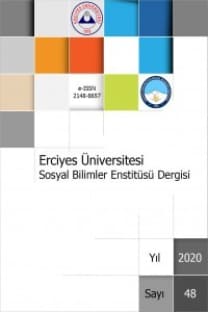İKİDİLLİLİK BECERİSİ VE HAKİM DİL: AÇIKLAMALI BİR ÇALIŞMA
Bu makale, iki dilli (Japonca ve İngilizce) bir yetişkinin (Natsuko) dilinin daha
baskın olduğunu tespit etmek amacıyla yapılmış olan bir durum çalışmasını sunmaktadır. Bu amaçla, Natsuko'nun cümle yapısı, anlam bilgisi, okumu-anlama, sesletim, resmi-gayri resmi dil kullanım açılarından yeterliliği bir takım testler (Stroop yöntemi, çıkartmalı sınav gibi) kullanılarak ölçülmüştür. Makale, Natsuko'nun iki dillilik davranışının niteliğini tartarak sona erer ve sınıf ortamında dil yeterliliğinin ölçülmesiyle ilgili bir takım göstergeler sunar.
A BILINGUAL S LINGUISTIC SKILLS AND LANGUAGE DOMINANCE : A DESCRIPTIVE STUDY
This paper presents a case study of a Japanese/English bilingual with the purpose of determining the subject s (Natsuko) dominant language. To achieve this goal and over a period of three months, a number of tests (the Stroop procedure, a cloze test, among others) are conducted to evaluate the subject s proficiency in syntax, semantics, reading comprehension, pronunciation, and formal and informal style of language use. The paper concludes with a discussion about the nature of Natsuko s bilingual behavior, and it provides implications for language testing in classroom setting
___
Baetens Beardsmore, Hugo. 1982. Bilingualism: Basic Principles. Clevendon, Avon, England: Tieto Ltd.Bloomfield, L. 1933. Language. New York: Holt, Rinehart and Winston.
Harris, Michael and Paul McCann.1994. Assessment. Oxford: Heinemann English Language Teaching
Hoffmann, Charlotte. 1991. An Introduction to Bilingualism. London: Longman.
Fabbro, Franco. 1999. The Neurolinguistics of Bilingualism: An introduction. Hove and New York: Psychology press.
Fasold, Ralph. 1984. The Sociolinguistics of Society. Oxford: Basil Blackwell.
Greenfield, L. 1972. Situational measures of normative language views in relation to person, place and topic among Puerto Rican bilinguals. In Joshua Fishman (ed.) Advances in the Sociology of Language, vol II, Mouton, 17- 35.
Grosjean, Francois. 1982. Life with two languages: An introduction to bilingualism. Cambridge: Harvard University Press.
--------. 1998. Studying bilinguals: Methodological and conceptual issues. Bilingualism: Language and Cognition 1, 131-149.
Kessler, Carolyn. 1984. Language acquisition in bilingual children. In N Miller (ed.) Bilingualism and Language Disability. London: Croom Helm, 26-54.
McNamara, Tim. 2000. Language Testing. Oxford: Oxford University Press.
Nida, Eugene A. and Charles R. Taber. 1982. The Theory and Practice of Translation. Leiden E.J. Brill: United Bible Societies.
Lambert, W., J. Havelka, and C. Crosby. 1958. The influence of language acquisition contexts on bilingualism. Journal of Abnormal and Social Psychology 56: 239 -244.
Lightbown, Patsy M. and Nina Spada. 1999. How languages are learned (2nd ed.). Oxford: Oxford University Press.
Littlewood, William T. 1984. Foreign and second language learning: Language- acquisition research and its implications for the classroom. Cambridge: Cambridge University press.
Parasher, S.N. 1980. Mother-tongue English diglossia: A case study of educated Indian bilinguals language use. Anthropological Linguistics 22, 4, 151- 168.
Romaine, Suzanne. 1989. Bilingualism. Oxford: Blackwell.
Yamada, Haru. 1989. American and Japanese topic management strategies in business meetings. Ph.D. dissertation. Georgetown University.
- Yayın Aralığı: Yılda 2 Sayı
- Yayıncı: Erciyes Üniversitesi
Sayıdaki Diğer Makaleler
Günümüzde Eleştirel Bir Yöntem Olarak Sigmar Polke’nin Sanatı
İKİDİLLİLİK BECERİSİ VE HAKİM DİL: AÇIKLAMALI BİR ÇALIŞMA
Jacob S. Kounin’e göre Sınıf Yönetimi Teknikleri
Nadine HÖNICKE, Çev: Hüseyin ARAK, Çev: Nehir Özcan ARSLAN
Küreselleşme ve Etkisi: Rus ve Kırım Tatar Öğrencilerinin Tutum ve Davranışlarının Analizi
Osman Zekayi ORHAN, İlhan GÜLLÜ
Ekonomik Büyüme ve Ödemeler Bilançosu Kısıtı: 1980-2006 Dönemi Türkiye Örneği
Kültepe Tabletleri Işığında, M. Ö. II. Binde Kadının İş Hayatındaki Yeri
Markalı Ürünleri Kullananları Kullanmayanlardan Ayıran Faktörler
